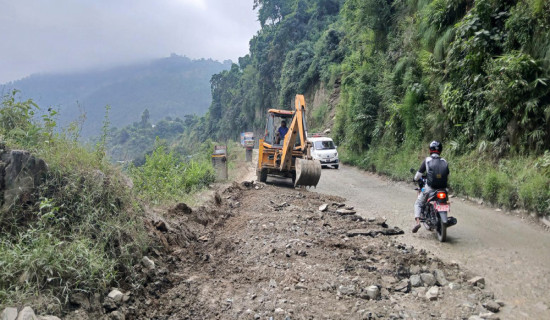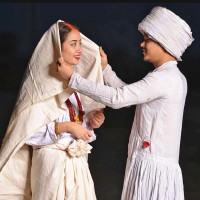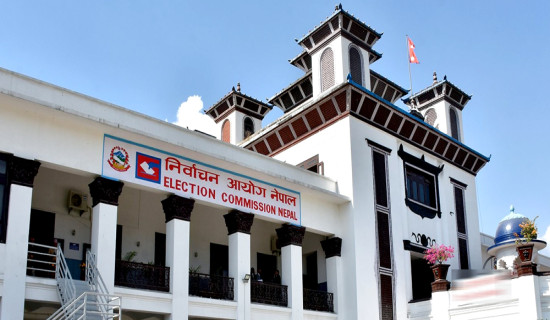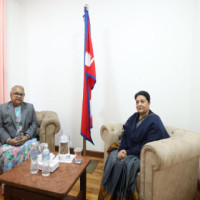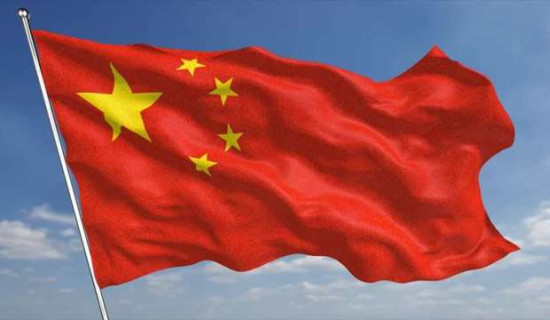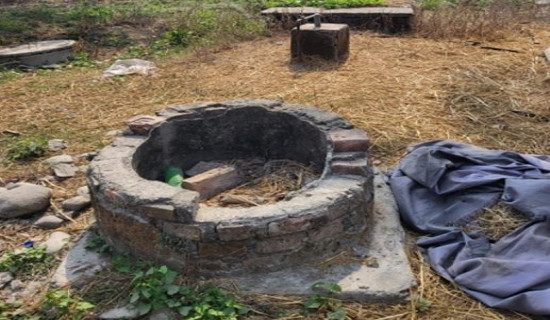- Monday, 8 December 2025
Kathmandu picks up fashion trend from TikTok, Instagram
By Dikshya Koirala,Kathmandu, July 17: Kathmandu is unapologetically fashionable. Young girls with their hair in the air and floaty dresses are quite a common sight on the streets of the Nepali capital. In the month of July, you notice the primacy of easy and casual attires.
There are many factors that shape sartorial culture of Kathmandu including social, cultural and economic. There are also different consumer behaviours. The rural population and typically older generation prefer traditional Nepal attires. These include daura suruwal, sarees and kurtas, which are mainly purchased from local markets, family-run tailors or traditional boutiques. On the contrary, modern urban buyers, including professionals, students and the younger generation prefer Western style, fusion wear and trendy style which are influenced by global trends, primarily shopping in a number of malls, branded stores, commercial hubs and online platforms. Middle-class families, composed of working adults and middle-aged individuals look for a balance of comfort and style. Luxury consumers, including celebrities and high-net-worth individuals, look for custom wear and exclusive pieces from designer stores and high-end boutiques.
Designer clothing has become more popular in Nepal in the past decade, according to 42-year-old Neera Shrestha, owner of a boutique in Naxal. She says, “Globalization, shifting fashion trends, and growing economic levels in Nepal are the reasons behind increased demand for fashionable apparel. Customers are spending more and more money on high-quality, customized boutique items these days. Men are progressively beginning to show interest in boutique apparel, as it was only associated with female clients in the past.”
Shopping behaviour varies significantly. Local markets and boutiques appeal for their affordability while the high-end stores offer convenience, variety and a mix of local and global brands.
Meanwhile, online shopping is gaining popularity due to its ease.
Manisha Shrestha, 39, a store owner in New Road, says, “In the past, we would buy and hang what we chose from wholesale ourselves. Now, most consumers follow the latest fashion. We must purchase clothing that is trending on TikTok. This TikTok impact is recent and has only been around for the last two to three years.”
“These days, one-piece outfits and dresses are also in style because of TikTok and Instagram. We also sell clothes online, since the younger generation likes internet shopping. Nevertheless, that comes with drawbacks as well; clients frequently claim that they don’t receive the same apparel they ordered as shown in the photographs,” she says.
Festivals, weddings, and religious ceremonies influence purchasing decisions. Bikash Lama, 30, a shop owner in New Road, says, “Clothes aren’t sold between winter and summer. Mostly, sales begin as soon as winter sets in. Not everyone buys clothing regularly. Individuals take a break and say let’s buy it during Dashain; there’s only one month left.”
Currently, wear-and-throw clothes dominate the fashion market, which is also overrun with fast fashion imports. This is mainly common among the younger generation. Soniya Khaling, 22, a salesperson in a store in New Road, says, “The majority of T-shirts that sell are crop tops, and the jeans are straight.”
As women’s clothes are more in demand than men’s, the store where she works exclusively sells clothing for women. Her store sells T-shirts for between Rs. 690 and Rs. 1390. The pants are priced at 1290 rupees. Between 50 to 100 customers visit the store each day. “The day when the most clothing is sold is Saturday. Teenagers are the ones who purchase the most clothing. Mid-size clothing typically sells less; plus-size and small-size clothing typically sell better,” she says.
In the fiscal year 2023/2024, garments worth Rs. 32. 61 billion were imported into Nepal. The garment business in Kathmandu is only growing. Many home-grown brands are getting popular. There is no definite tradition or modern style that people follow. “Nepal’s contemporary fashion design hasn’t always strictly followed indigenous style or tried to replace local with global. Instead, as a result of globalization, cultural icons have been updated into modern designs that reference past social, cultural, and historical legacies,” says fashion expert Utkrishta Khakda.
He adds, “In addition, urban customers are becoming more conscious of and appreciative of genuine, high-quality goods. Attire that blends traditional features with contemporary patterns, eco-conscious consumers’ preference for sustainable fashion, and an increase in custom and personalized clothing for individuals seeking one-of-a-kind looks are some of the current trends in Nepali fashion.”
Y2K and the Korean wave are two major global trends that have gained popularity in Kathmandu in recent years. Baby shirts, platform shoes, halter tops, low-rise jeans, and baby tees are some of the major trends of Y2K. The Korean wave featured several major fashion trends, such as layering, jackets, monochrome ensembles, and accessories.
(Koirala is an intern with The Rising Nepal.)



